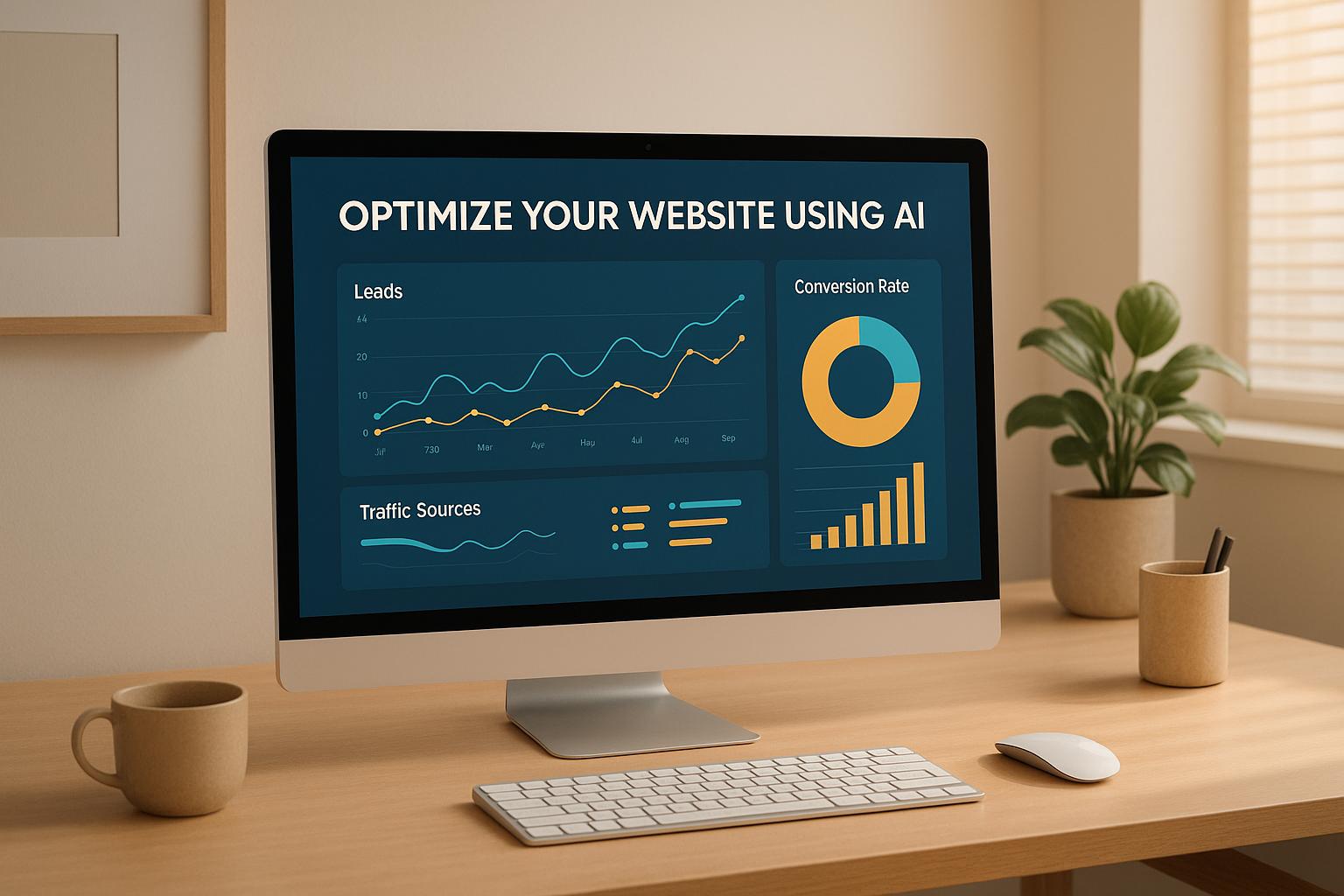

Multivariate Testing vs AB Testing: The Lowdown

Multivariate Testing vs AB Testing: The Lowdown
 23-01-2025 (Last modified: 23-06-2025)
23-01-2025 (Last modified: 23-06-2025)
Introduction
So… let’s discuss ‘testing’ and two methods that you’ll hear mentioned a lot: Multivariate testing vs AB testing. They are similar in nature but distinctly different and we’re here to explain how! We’ll use this quick guide to introduce both, listing their unique advantages and how to use each. We’ll cover the key differences between multivariate testing vs AB testing, highlight their benefits, and explore their best use cases to help you make the right choice for your goals.
What Is A/B Testing?
A/B testing, also known as ‘split-testing’, is a pretty straightforward method where you compare two versions of a webpage or marketing asset to see which performs better. You create two variants – Version A (the control) and Version B (the variation) – and split your audience evenly to measure performance based on a specific metric, such as click-through rate (CTR) or conversion rate. When you only have two variants to compare, it means the test is relatively easy to run and see results from.

Let’s take a look at a A/B Testing Example:
- Version A: A blue CTA button that says “Sign Up Now.”
- Version B: A red CTA button that says “Join Today.”
The version with the higher CTR or conversions is deemed the winner – simple hey!
Best For: Simple, focused tests where you want to isolate one change at a time.
What Is Multivariate Testing?
Multivariate testing takes experimentation to the next level by testing multiple elements simultaneously to see how they interact. Instead of just comparing two versions, multivariate testing allows you to test all possible combinations of changes across multiple variables. This is great but you need to keep in mind that the tests will take longer and will involve more in depth analysis to work out the best results. But even so, once you’ve done this and patiently waited to see the results, you’ll have a clear guide as to what’s working and what’s not, on your website.
Let’s take a look at an example of Multivariate Testing:
Imagine you’re testing:
- Headline: “Boost Your Productivity” vs. “Achieve More Every Day.”
- CTA Button Color: Blue vs. Green.
- Hero Image: Product photo vs. Lifestyle shot.
With multivariate testing, you’d test all combinations of these variables (2x2x2 = 8 versions) to identify the combination that performs best.
Best For: Complex pages or campaigns where multiple elements work together to influence results.
Key Differences Between Multivariate Testing vs AB Testing
1. Number of Variables Tested
- A/B Testing: Tests one variable at a time (e.g., CTA text or headline).
- Multivariate Testing: Tests multiple variables simultaneously (e.g., CTA text, button color, and headline).
2. Complexity
- A/B Testing: Simple to set up and analyze. Ideal for marketers with limited time or resources.
- Multivariate Testing: Requires more traffic and advanced tools to manage the complexity of multiple combinations.

3. Traffic Requirements
- A/B Testing: Needs less traffic to achieve statistically significant results.
- Multivariate Testing: Requires high traffic because you’re dividing your audience across more combinations.
4. Insights Provided
- A/B Testing: Pinpoints the effect of a single change.
- Multivariate Testing: Identifies how different elements work together and which combination performs best.
Benefits of A/B Testing
- Simplicity: Easy to set up and analyze.
- Actionable Insights: Clearly shows which change impacts your metric.
- Quick Results: Ideal for sites or campaigns with moderate traffic.
- Cost-Effective: Requires fewer resources compared to multivariate testing.
Best Use Cases for A/B Testing:
- Testing headlines, CTAs, or form lengths.
- Optimizing email subject lines or ad copy.
- Improving individual elements on a landing page.
Benefits of Multivariate Testing
- Holistic Insights: Shows how multiple elements interact and their combined impact.
- Comprehensive Results: Helps identify the best-performing combination of changes.
- Ideal for High-Traffic Sites: Maximizes value from larger audiences.
Best Use Cases for Multivariate Testing:
- Optimizing complex landing pages with multiple elements.
- Testing product pages with varied layouts and visuals.
- Analyzing how combinations of headlines, images, and CTAs impact conversions.
Challenges of Multivariate Testing vs AB Testing
Multivariate Testing Challenges:
- Traffic Demand: Requires significantly higher traffic to test all combinations effectively.
- Complexity: More difficult to set up and analyze, especially without advanced tools.
- Time-Consuming: Tests take longer due to the number of variables involved.
A/B Testing Challenges:
- Limited Insights: Focuses on one variable at a time, which may not reflect the full picture.
- Sequential Testing Required: To test multiple elements, you need to run separate A/B tests, which can take longer overall.
For more tips on avoiding pitfalls, check out our guide on A/B testing mistakes to avoid.
Tools for A/B and Multivariate Testing
A/B and Multivariate Testing Platforms:
- PageTest.ai: Offers both A/B and multivariate testing, powered by AI to streamline the process and generate actionable insights.
- VWO (Visual Website Optimizer): Ideal for complex multivariate experiments and behavioral insights.
- Adobe Target: Designed for enterprise-level multivariate testing and personalization.
- AB Tasty: Supports both A/B and multivariate testing with a focus on user experience.
For more guidance on selecting the right tool, see our article on A/B testing platforms.
How to Choose Between Multivariate Testing vs AB Testing
The choice between multivariate testing and A/B testing depends on your specific goals, traffic, and resources. Here’s a quick guide to help you decide:
Choose A/B Testing If:
- You want to test one element at a time.
- Your site or campaign has low to moderate traffic.
- You’re new to testing and need a simple setup.
Choose Multivariate Testing If:
- You want to understand how multiple elements interact.
- Your site has high traffic and can support dividing users across many combinations.
- You’re optimizing complex pages with multiple variables.
Combining Multivariate Testing and A/B Testing
While these methods are distinct, they’re not mutually exclusive. Many marketers start with A/B testing to identify high-impact elements and then use multivariate testing to refine combinations. For example:
- Step 1: A/B Test Individual Elements
- Test headlines or CTA text to identify the most impactful change.
- Step 2: Run Multivariate Tests
- Use multivariate testing to determine the best combination of headline, CTA, and visuals.
Conclusion: Multivariate Testing vs AB Testing
Multivariate testing and A/B testing are powerful tools that serve different purposes. A/B testing shines when you need quick, straightforward insights into single changes, while multivariate testing is ideal for understanding complex interactions between multiple elements. By understanding their differences and benefits, you can choose the right method for your marketing goals and resources.
Ready to optimize your campaigns? Whether you choose A/B testing, multivariate testing, or a combination of both, the key is to test strategically and let data guide your decisions. Happy testing!
Q&A: Multivariate vs A/B Testing
What’s the difference between A/B testing and multivariate testing?
A/B testing compares one change at a time; multivariate testing tests multiple changes in combination.
When should I use A/B testing?
Use A/B testing for quick wins or when testing a single element like a headline or CTA.
Who should use multivariate testing?
Marketers with high-traffic sites who want to understand how different page elements interact.
Does multivariate testing need more traffic than A/B testing?
Yes—more combinations mean you need a larger audience to reach valid results.
Can I use both A/B and multivariate testing?
Absolutely. Start with A/B to find strong elements, then use multivariate to fine-tune combinations.
say hello to easy Content Testing
try PageTest.AI tool for free
Start making the most of your websites traffic and optimize your content and CTAs.
Related Posts

 02-12-2025
02-12-2025
 Ian Naylor
Ian Naylor
Website Speed Test for Instant Insights
Test your website speed with our free tool! Enter a URL to get instant insights on load time, TTFB, and more. Optimize your site today!

 01-12-2025
01-12-2025
 Ian Naylor
Ian Naylor
How to Optimize Your Website for More Leads Using AI
Learn how to optimize your website for more leads using AI. Discover actionable tips for better conversions and trust-building strategies.

 01-12-2025
01-12-2025
 Ian Naylor
Ian Naylor
How to Optimize Your Content for SGE and GEO
Discover strategies to optimize your content for traditional SEO, Google’s SGE, and GEO to stay ahead in AI-driven search engines.
